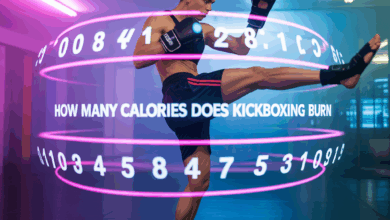How Many Calories Does Russian Twists Burn — Real Numbers & Practical Tips

Ever finished a quick core session and thought, “I did 200 Russian twists — that must have torched a bunch of calories,” then checked your tracker and wondered if you were overestimating? If you’ve ever asked “how many calories does russian twists burn,” you’re not alone — the answer depends on several key factors, and understanding them helps you program smarter workouts.
Quick answer: how many calories does russian twists burn?
There’s no single number because calorie burn depends on body weight, pace, intensity, and whether you add resistance. As a rule of thumb:
- Light to moderate effort: ~3–5 kcal per minute
- Vigorous effort (weighted, faster pace): ~6–8+ kcal per minute
Example calculations using the MET formula (rough estimate):
- 70 kg (155 lb) doing moderate Russian twists (~4 METs): ~5 kcal/min → 50 kcal in 10 minutes
- 84 kg (185 lb) doing vigorous, weighted twists (~6 METs): ~7.3 kcal/min → ~73 kcal in 10 minutes
So a typical 3-set Russian twist segment in a strength session is more about core strength and conditioning than a huge calorie burner — unless you string exercises into higher-intensity circuits.
What affects calorie burn during Russian twists?
Body weight and composition
Heavier individuals burn more calories doing the same movement because moving more mass requires more energy. Muscle mass also influences resting metabolism, which affects total daily burn.
Intensity and tempo
Faster reps or shorter rest periods increase heart rate and total energy used. Adding a medicine ball or weight plate increases resistance and calories burned.
Range of motion and form
Full rotation, controlled movement, and maintaining a braced core make the exercise more demanding than lazy, short twists.
Training context
Doing Russian twists as part of a HIIT circuit or EMOM increases overall metabolic demand far more than isolating them in a slow, steady-strength set.
How many calories does russian twists burn: real-world examples and sample workouts
Below are practical examples and a couple of sample circuits you can try. These estimates assume good form and continuous movement.
Sample calculations (estimates)
- 70 kg (155 lb), moderate (4 METs): ~5 kcal/min. 3 sets of 20 twists (approx. 4–6 minutes) ≈ 20–30 kcal
- 84 kg (185 lb), weighted & fast (6 METs): ~7.3 kcal/min. 10 minutes active (e.g., EMOM) ≈ 73 kcal
- 30-minute core-focused circuit with Russian twists included: 150–300 kcal depending on intensity and rest
Beginner circuit (12–15 minutes)
- Dynamic warm-up — 3 minutes
- 3 rounds:
Estimated burn: 40–80 kcal depending on weight and pace.
Fat-burning/conditioning circuit (20 minutes)
- AMRAP 20 minutes:
Estimated burn: 200–350 kcal — higher because of cardio moves paired with the core exercise.
Variations and progressions to increase calorie burn
- Weighted Russian twists (medicine ball, kettlebell, dumbbell)
- Decline bench Russian twists (increases range of motion)
- Standing cable or banded twists (adds resistance and stability challenge)
- Slow pulses or time-under-tension — more muscle fatigue, greater metabolic cost
- Pair with full-body moves (burpees, kettlebell swings) for higher calorie burn
Form and safety tips
- Keep your spine neutral — avoid rounding the lower back.
- Brace your core and move through the torso, not just your arms.
- If you have low back issues, reduce range of motion or perform standing variations.
- Breathe — exhale on the twist, inhale on the return.
Nutrition and lifestyle advice to support fat loss and performance
Russian twists are a useful tool, but visible results come from the combination of exercise, nutrition, and recovery:
- Create a small, sustainable calorie deficit for fat loss — 200–500 kcal/day is reasonable for many people.
- Prioritize protein (0.7–1.0 g per lb of body weight) to maintain muscle while losing fat.
- Support workouts with quality sleep (7–9 hours) and adequate hydration.
- Combine core training with full-body strength and cardio for the best metabolic results.
Want structured plans? Check out our workout routines and nutrition guides for step-by-step programs and meal advice.
Frequently Asked Questions
Typically between 30–80 kcal depending on body weight and intensity. Non-weighted moderate pace is near the lower end; weighted and fast-paced sets are toward the upper end.
Russian twists strengthen and tone the core muscles but spot reduction isn’t possible. To reduce belly fat, pair core work with full-body strength training, cardio, and proper nutrition.
For core strength, 3 sets of 12–20 reps per side works well. For conditioning and extra calorie burn, incorporate Russian twists into circuits or HIIT sessions (AMRAPs, EMOMs) and adjust load and tempo over time.
Conclusion — how many calories does russian twists burn and what next?
So, how many calories does russian twists burn? It varies — roughly 3–8+ kcal per minute depending on the factors above. Russian twists are best used as a core-strength and conditioning tool. To maximize calorie burn, add resistance, shorten rests, and combine twists with full-body movements in a circuit. If you want personalized programming, explore our workout routines and wellness tips for tailored plans and lifestyle strategies.
Ready to make your core work smarter — not just harder? Try the fat-burning circuit above this week, track how you feel, and adjust weight or pace. Share your progress or questions in the comments and I’ll help you tweak your plan.





